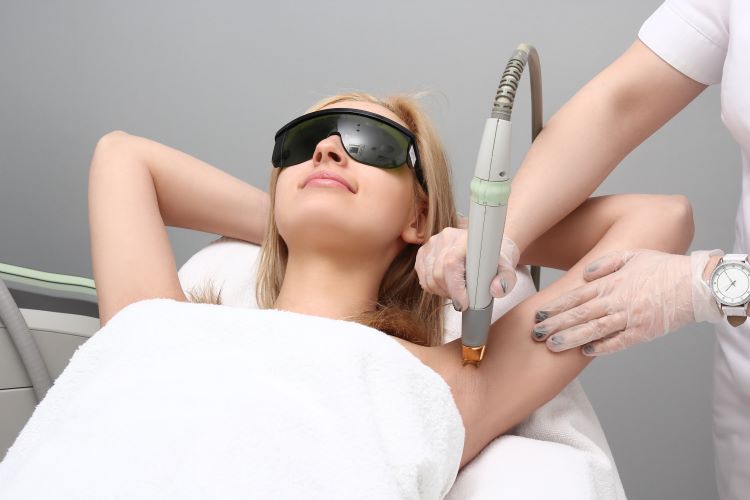Understanding Laser Hair Removal: Complete Guide to the Procedure
Laser hair removal has become one of the most popular cosmetic procedures worldwide, offering a long-term solution to unwanted body hair. This advanced treatment uses concentrated light beams to target hair follicles, effectively reducing hair growth over multiple sessions. Whether you're considering this procedure for the first time or seeking to understand the process better, knowing what to expect can help you make an informed decision about this investment in your personal care routine.

Laser hair removal represents a significant advancement in cosmetic technology, providing individuals with an effective alternative to traditional hair removal methods like shaving, waxing, or plucking. The procedure works by directing highly concentrated light into hair follicles, where the pigment absorbs the light and destroys the hair. This process requires multiple sessions to achieve optimal results, as hair grows in different cycles and the laser can only effectively target hair during its active growth phase.
Understanding Laser Hair Removal: What You Need to Know
The science behind laser hair removal involves selective photothermolysis, a process where specific wavelengths of light target melanin in hair follicles without damaging surrounding skin tissue. Different types of lasers are used depending on skin tone and hair color, including Alexandrite, Diode, and Nd:YAG lasers. Each type offers specific advantages for different skin and hair combinations. The procedure is most effective on dark, coarse hair and works best on individuals with light skin and dark hair, though newer technologies have expanded treatment options for various skin tones.
Treatment areas commonly include legs, arms, underarms, bikini line, face, and back. The number of sessions required typically ranges from six to eight treatments, spaced four to six weeks apart. Factors affecting treatment success include hair color, skin tone, hair thickness, and the treatment area’s size. Hormonal changes, medications, and individual hair growth patterns can also influence results.
What Are the Benefits of Laser Hair Removal?
Laser hair removal offers numerous advantages over traditional hair removal methods. The most significant benefit is long-term hair reduction, with many patients experiencing permanent hair loss in treated areas after completing their session series. Unlike shaving, which requires daily maintenance, or waxing, which needs monthly appointments, laser treatments provide lasting results.
Precision is another key advantage, as lasers can selectively target dark, coarse hairs while leaving surrounding skin undamaged. This precision makes the treatment suitable for sensitive areas like the face and bikini line. The procedure is also relatively quick, with small areas taking minutes and larger areas requiring up to an hour.
Additional benefits include reduced ingrown hairs, which commonly occur with shaving and waxing. Many patients also report smoother skin texture and reduced skin irritation compared to other hair removal methods. Over time, the cost-effectiveness becomes apparent when compared to lifetime expenses of razors, shaving cream, waxing appointments, and other temporary solutions.
What to Expect During the Procedure
Before treatment begins, patients undergo a consultation to assess skin type, hair color, and medical history. Certain medications, recent sun exposure, and skin conditions may affect treatment eligibility. Pre-treatment preparation includes avoiding sun exposure, stopping other hair removal methods except shaving, and following specific skincare instructions.
During the actual procedure, both patient and technician wear protective eyewear. The treatment area is cleaned, and a cooling gel may be applied to protect the skin surface. The laser device is adjusted based on hair color, thickness, and skin tone. Patients typically describe the sensation as similar to a rubber band snapping against the skin, though pain tolerance varies among individuals.
Post-treatment care involves avoiding sun exposure, using gentle skincare products, and following specific aftercare instructions. Some patients experience temporary redness, swelling, or mild discomfort, which typically resolves within hours to days. Hair in treated areas will shed over the following weeks, and new hair growth will be finer and lighter with each subsequent session.
| Provider Type | Average Cost Per Session | Treatment Area Coverage |
|---|---|---|
| Medical Spas | $200-$400 | Full legs, arms, back |
| Dermatology Clinics | $150-$350 | Face, underarms, bikini |
| Cosmetic Surgery Centers | $250-$500 | Large body areas |
| Chain Laser Centers | $100-$300 | Various packages available |
Prices, rates, or cost estimates mentioned in this article are based on the latest available information but may change over time. Independent research is advised before making financial decisions.
Considerations and Potential Side Effects
While laser hair removal is generally safe when performed by qualified professionals, potential side effects exist. Common temporary effects include skin irritation, redness, and swelling around treated follicles. These symptoms typically resolve within hours to days. More serious but rare complications can include changes in skin pigmentation, scarring, or burns from improper technique or equipment settings.
Certain individuals should avoid laser hair removal, including pregnant women, people with active skin infections, and those taking specific medications that increase light sensitivity. Individuals with very light or gray hair may not achieve optimal results, as the laser requires pigment to target follicles effectively.
Choosing a qualified provider is crucial for safety and effectiveness. Look for certified dermatologists, licensed medical professionals, or experienced technicians working under medical supervision. Verify credentials, read reviews, and ensure the facility uses FDA-approved equipment.
Laser hair removal continues to evolve with technological advances, offering improved comfort, effectiveness, and suitability for diverse skin types. Understanding the procedure, benefits, and realistic expectations helps individuals make informed decisions about this popular cosmetic treatment.
This article is for informational purposes only and should not be considered medical advice. Please consult a qualified healthcare professional for personalized guidance and treatment.




